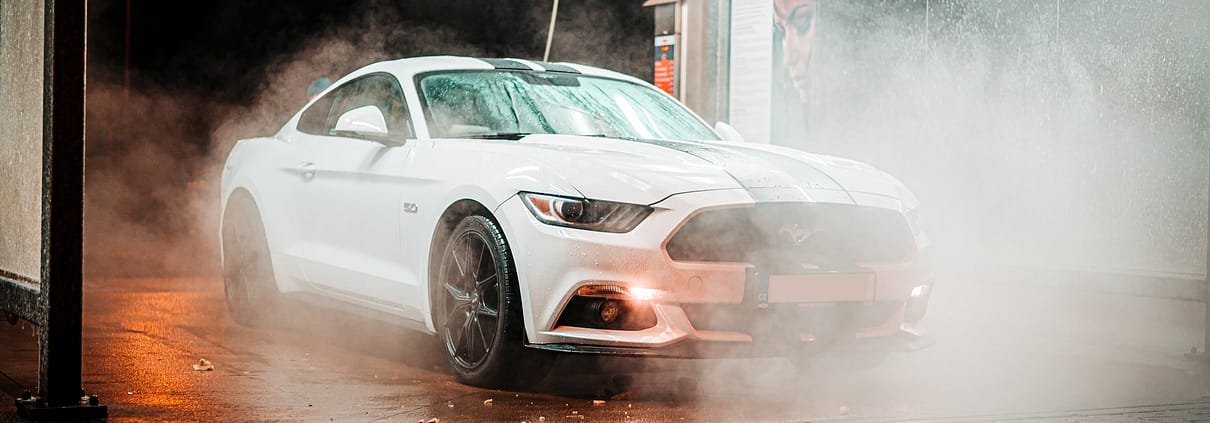What is a Waterless Car Wash?
It can be a real drag to keep your car clean. After a full detail, wax, or polish, it’s all but guaranteed to rain or a massive dustbowl-style windstorm kicks up. Your clean car is now spotted, dusty, and doesn’t have the pride-inducing luster it did just a short time earlier. But if your car needs a detailing touchup on the outside, you don’t need to go through the whole rigamarole again. Instead, just do a waterless car wash.
Waterless car wash? Is that really a thing? It is, and it’s exactly like it sounds. Using a specific type of spray and clean microfiber cloths, you can make your car gleam like it just pulled out of the car wash bay.
Here’s what you need to know.
What’s in waterless car wash sprays?
You don’t need suds or scrubbing bubbles if you aren’t washing your car with water. Instead of soaps, waterless car wash sprays contain compounds with cleaning compound that’s slicker than water. It’s this slick action that grabs onto dust, water spots, and low levels of dirt, suspending it away from the car body so it doesn’t act as an aggregate against the paint when you wipe it off.
Many waterless sprays also contain some type of wax or sealant that makes water bead right off and resists other environmental contaminants from sticking.
Does it actually work?
If you’re skeptical of a car wash that cleans well without a drop of water, you’re not alone. However, using it in the right conditions gets you the same results as a bona fide car wash, bubbles and all, plus an extra component of protection and perhaps even a little more shine.
The caveat is that your car can’t be filthy. Waterless car washes area intended for lightly soiled exteriors or as a touch up. Think of a car that has a covering of dust after being parked underground for a week or someone who’s touching up their pride and joy before a car show.
Pros and cons of a waterless car wash
Like any products, there’s good and bad for waterless car washes. Is it right for your needs? Consider these things.
Pros:
- Faster and cleaner than a complete hand car wash
- No streaking
- Leaves a high-gloss finish
- Resists dust, grease, grime, dirt, and water adhesion
- Can usually be used on paint, glass, wheels, and trim
- Better for the environment since soaps don’t end up in groundwater
Cons:
- Can lead to scratches and streaks if your car is too dirty
- Requires elbow grease
- Takes more time than a touchless car wash
What do you need for a waterless car wash?
Here’s the thing about waterless car washes: they’re simple and efficient. You don’t need a bunch of equipment or supplies. You’ll need a handful of microfiber cloths and your choice of waterless car wash sprays.
Depending on the size of your vehicle and how liberal you want to be with the spray, you’ll use about 4 to 10 ounces of spray per wash.
How to do a waterless car wash
Although there isn’t much you need for the job, completing a waterless car wash requires you to be at least a little detail oriented. Follow these steps to get an outcome you can be proud of.
Step 1: Prep your car and workspace
Ideally, you don’t want to use a waterless car wash in full sun or when the paint is hot. The more the spray dries on the car without being wiped fast enough, the more your chances are of streaks. Plus, you’ll need to re-spray the area to wet it again.
As well, have a stack of microfiber cloths cleaned and folded in half, then in half again. That way, you have eight areas of the same cloth to use rather than just two sides.
Step 2: Lay down a liberal spray onto a body panel and the cloth
Typically, the top of your car is the cleanest and it progressively gets dirtier the lower you go. Start at the top – like on the roof, and mist a workable area plus dampen the cloth with the spray.
Work one area at a time, otherwise the spray might dry by the time you get around to wiping it off.
Step 3: Wipe the spray off
Using linear motions rather than circles, wipe the moistened panel. If you see hazing or streaks, flip your cloth and wipe with a dry side. Use gentle pressure, because you don’t want to rub the dirt suspended in the compound against the paint. That’s how you get scratches.
When the cloth gets dirty, flip it around for a clean section or change it out for a clean one.
Step 4: Repeat
Work your way over the whole car this way, from the top to the bottom. Most waterless car washes are also great for use on glass, trim, and wheels, and it’s best to have dedicated cloths for these areas.
Any areas that look streaky after you’re done can be touched up simply by spraying the cloth or the paint and giving it a quick wipe off.




Leave a Reply
Want to join the discussion?Feel free to contribute!